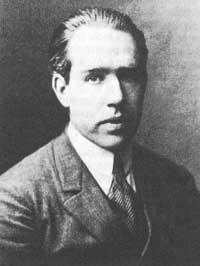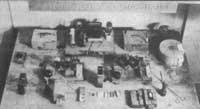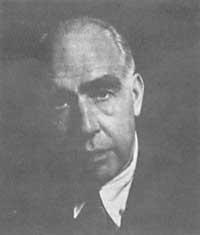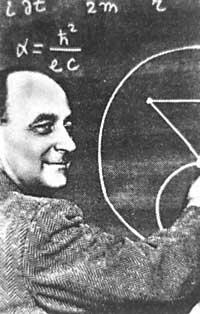Niels Bohr
1993/10/01 Azkune Mendia, Iñaki - Elhuyar Fundazioa Iturria: Elhuyar aldizkaria
This prestigious Danish physicist was born in Copenhagen on October 7, 1885. His father was a professor of physiology. Niels studied at the University of Copenhagen, where he completed his doctoral thesis in 1911. Later, after obtaining the Carlsberg Foundation scholarship, he was able to complete his studies abroad. He went to Cambridge to work in the Rutherford laboratory. In 1916 he returned to the University of Copenhagen as professor of physics.
Rutherford developed the model of the nucleus atom, that is, the atom had a small and compact nucleus in its center and revolved around the electrons. At Cambridge, Bohr came up with combining the inner structure of the atom with Planck's quantum theory. It seemed to him that it could be explained better how they absorbed and emitted radiant energy. These carpentry and emissions were very important in spectroscopy. The location of the lines appearing in the spectroscopy of the different substances was measured until then, but he did not care to explain why each line was in a certain place.

Bohr first studied the hydrogen atom because it was the easiest. In 1913 he had prepared the scheme. According to him, the electrons of the hydrogen atom did not emit radiations by internal oscillation of the atom, but moved orbiting closer to the nucleus. On the other hand, when the electron absorbed energy, it moved into an orbit away from the nucleus. Electromagnetic radiation, therefore, originated when atomic fractions changed energy level, each orbit having a certain amount of energy. When moving from one orbit to another, the electron absorbed or emitted a certain amount of energy (a few).
The model for the Bohr hydrogen atom was not complex enough to explain the position of the spectrum lines. Sommerfeld then considered elliptical orbits and also orbits that formed different angles.
Niels Bohr's atomic model, however, allowed spectroscopic data to be used to study the structure of the atom, so in 1922 he was awarded the Nobel Prize.
Bohr did not develop models for atoms more complex than hydrogen, but noted that when they were several electrons they should be forming “layers.”
In 1939 Bohr attended a conference in the United States where he announced the news that, following Hahn's idea, Lise Meitner was able to give a news: that bombing uranium with neutrons could set it. Bohr predicted that it was 235 uranium that could be physialized.
Bohr returned to Denmark and was invaded by Hitler's troops in 1940. In 1943 he managed to flee to England and from there he moved to the United States. Until 1945 he prepared the atomic bomb of Los Alamos. But then he tried to use atomic energy not for war, but for peace. In 1957 he received the “Atoms of Peace” award.
He died in Copenhagen on 18 November 1962.

Gai honi buruzko eduki gehiago
Elhuyarrek garatutako teknologia





